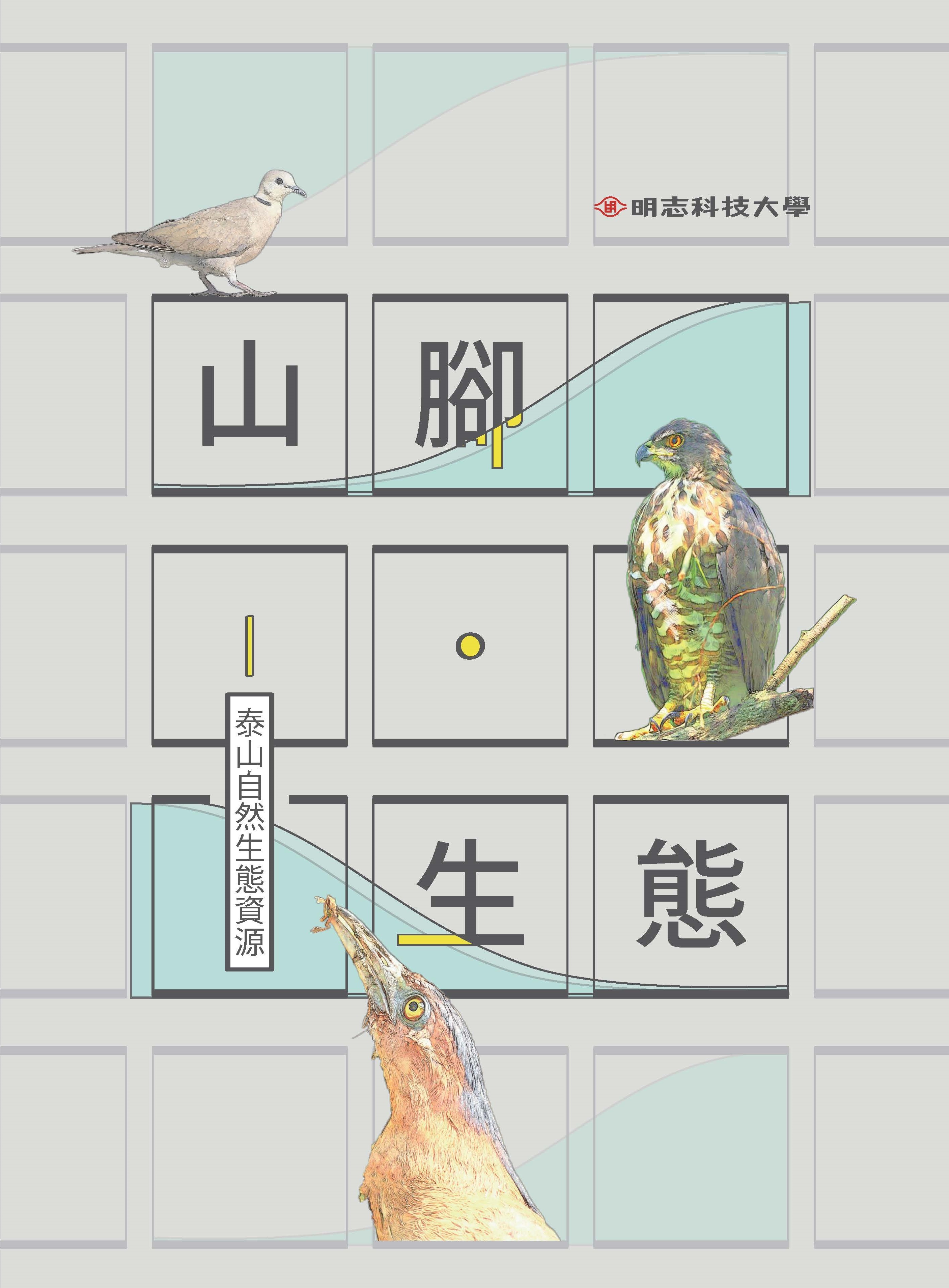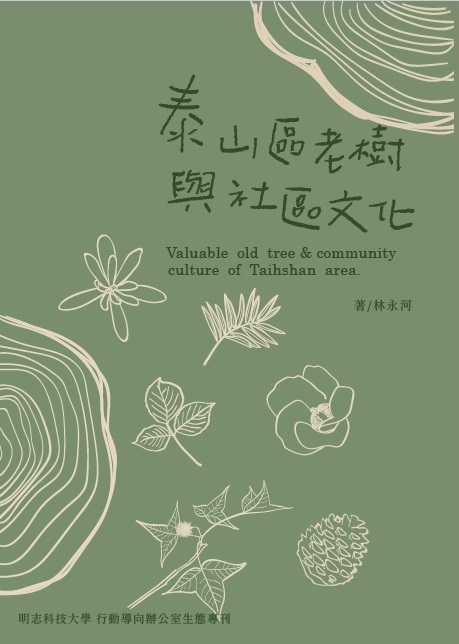Biodiversity
MCUT prioritizes biodiversity conservation. The Fifteenth Meeting of the Conference of the Parties to the Convention on Biological Diversity (COP15) in 2022 resulted in adopting the Kumming-Montréal Global Biodiversity Framework. A key component of this framework is the "30 X 30" goal, which aims to effectively protect and manage 30% of the world’s lands and oceans with biodiversity by 2030. MCUT is committed to understanding and implementing the Kumming-Montréal Global Biodiversity Framework. In alignment with this framework, MCUT will gradually increase financial support to enhance biodiversity conservation efforts.
Inventory of Biodiversity Hotspots around the Campus
MCUT is situated at the foothills of Guizi Village, Taishan District, New Taipei City, covering an area of 0.62 km2. MCUT has conducted an inventory of biodiversity hotspots within its operation scope using the LEAP (Locate, Evaluate, Assess, Prepare) method to identify natural risks. It has also adopted the Species Emergence Record Query established by the Taiwan Biodiversity Information Alliance (TBIA) to investigate records on the emergence of conservation species around the campus. Initially, MCUT conducted the survey according to relevant data from the Biological Investigation Database established by the Forestry and Nature Conservation Agency, MOA. MCUT is 1.75km and 2.88km away from Xinzhuang Water Conservation Forest (green part), the nearest shelter forest, and Taoyuan's Reservoir and Canal Wetland (blue part), a national wetland, respectively. MCUT conducts operating activities as a university research organization and, therefore, does not impose any direct impact on the biodiversity of these two places. We will continually observe our potential impact on the biodiversity hotspots in these two places and establish relevant management approaches to address biodiversity, thus contributing to the campus's biodiversity.
Additionally, according to relevant data from the “Species Emergence Record Query” established by the Taiwan Biodiversity Information Alliance (TBIA), there were records of the emergence of 7 conservation species within a 2km radius around MCUT (latitude/longitude: 121.42239725449349, 25.041228287119147) in 2023. These species are Zhangixalus taipeianu, Acridotheres cristatellus, Milvus migrans, Otus lettia, Urocissa caerulea, Lanius cristatus, and Spilornis cheela. Among them, a total of 42 bird species, including Spilornis cheela, Otus lettia, and Urocissa caerulea, were active within the campus and were recorded and included in the special issue of Foothills · Ecology-Natural Ecological Resources of Taishan. MCUT will continually track records on the emergence of conservation species around the campus and plan and formulate relevant policies to sustain biodiversity.
Water Quality Monitoring in Taishan and Wugu and Water Environment Patrolling Team
Since the trial period of MCUT’s USR Practice Project in 2017, we have been involved in exploring local issues through environmental monitoring. Using our expertise, we have conducted water quality and air pollution monitoring in Taishan District since June 2018. After four years of carrying out these activities, MCUT has established strong partnerships with the Xinzhuang Community University Water Environment Patrolling Team under the Water Resources Department, New Taipei City Government, and the Wugu Wetland Water Environment Patrolling Team under the Environmental Protection Department, New Taipei City Government. In October 2019, the Soil and Water Conservation Management Section under the Environmental Protection Department, New Taipei City Government, invited MCUT to establish the Taishan Water Environment Patrolling Team. This collaboration integrates our faculty and students as the cooperation targets, with the guiding expertise of the Xinzhuang Community University Water Environment Patrolling Team, forming a unique university-led water patrolling team. We regularly publish water quality monitoring items and data from Taishan District and Wugu District in local Facebook communities and provide them to the Environmental Protection Department, New Taipei City Government, for reference. The testing data for each period has already been announced on the community and the project's webpage for future reference.
MCUT has sought help from local school education directors at all levels since 2022 to jointly compile the Annual Report of Environmental Education of the Taishan District. This report was later renamed to the Annual Report of Environmental and Ecological Education of Guanyin Mountain in 2023. As part of our water pollution monitoring project, MCUT tests the water quality of 6 sites in Taishan District, New Taipei City, and twice a month (at the beginning and middle of the month). We also test the water quality of 7 sites in Wugu District, New Taipei City, once every month (at the end of each month). The test items are classified into four levels based on international pollution standards: 1. No pollution or slight pollution; 2. Mild pollution; 3. Moderate pollution; 4. Serious pollution. The testing indicators include four water quality parameters: 1. Suspended solids; 2. COD; 3. Dissolved oxygen; 4. Ammonia nitrogen. These parameters are integrated into the River Pollution Index (RPI). MCUT utilizes the professional knowledge of teachers and students from its Department of Safety, Health, and Environmental Engineering to contribute to the local communities. Relevant testing data is released on Facebook communities such as "Life Education Commune in Xinzhuang, Wugu, Taishan, and Linkou," "ㄨㄚ are Taishan People," and "I’m a Wugu Person" to continue drawing attention from the local community residents to the local water environment.
MCUT will regularly collect water samples from 6 sites in Taishan District, seven in Wugu District, and three in Xinzhuang District, newly added in 2023. Approximately 700 cubic centimeters of water samples will be taken from each location to measure and record on-site dissolved oxygen and water temperature. The relevant water samples will then be brought to the Department of Safety, Health, and Environmental Engineering laboratory for analysis of other parameters, aiming to understand the pollution conditions of the water systems in Xinzhuang and Taishan. Furthermore, guided by the Environmental Protection Department of the New Taipei City Government, MCUT has formed a water environment patrolling team in Taishan District to conduct patrols along the Gueizikeng River and Dayongkeng River. This patrolling team will conduct 2-3 patrols weekly, filling out observation records and implementing whistleblowing and notification procedures to address suspected pollution cases. In 2022, the university planned to collaborate with the Xinzhuang Water Patrolling Team and include water quality test items in Xinzhuang District. Feedback on the local findings will be provided, and analysis data will be shared with local communities to raise awareness and encourage reflection on water pollution among local residents.
Industry-Academia Research Building Construction Project
To enhance its research and development capacity, MCUT has made arrangements for future applied science and technology development. The university plans to construct an industry-academia research building. According to the regulations specified in the "Standards for Determining Specific Items and Scope of Environmental Impact Assessments for Development Activities" released by the Ministry of Environment, Executive Yuan on August 18, 2020, an environmental impact assessment is required if the cumulative development area is 5 hectares or more since March 2, 2010. From March 2, 2010, to the end of January 2023, the cumulative developed area for the Innovation Building of MCUT is 1.5214 hectares. The planned industry-academia research building construction project covers an area of approximately 1.6763 hectares, bringing the total cumulative developed area to approximately 3.1977 hectares. If the development area reaches 5 hectares in the future, a comprehensive environmental impact assessment will be conducted for the new campus land development project, as required by the "Standards for Determining Specific Items and Scope of Environmental Impact Assessments for Development Activities." This ensures no adverse impact on the biodiversity in the region where the MCUT campus is located.
Issuance of Periodicals on Biodiversity
Since 2022, MCUT has collaborated with local middle and elementary schools, Nanya Technology Corporation, community colleges, and NGOs to publish the Annual Report of Environmental Education of Taishan District (renamed to Annual Report of Environmental and Ecological Education of Guanyin Mountain in 2023). Furthermore, MCUT issued two periodicals focusing on the natural ecology in Taishan District in 2019, i.e., Foothills · Ecology-Natural Ecological Resources of Taishan and Valuable Old Tree & Community Culture of Taishan Area. Environmental education has been introduced in detail in Foothills · Ecology-Natural Ecological Resources of Taishan. This periodical also includes a survey of various bird species and their habitats and habits within the campus. Also, the campus is divided into blocks A, B, C, and D, and the birds and human disturbances in these blocks are detailed; in Valuable Old Tree & Community Culture of Taishan Area, the features, application, and characteristics of each old tree in Taishan District are introduced. These periodicals are very helpful for teachers and students to learn about the plants and native species near the campus.










